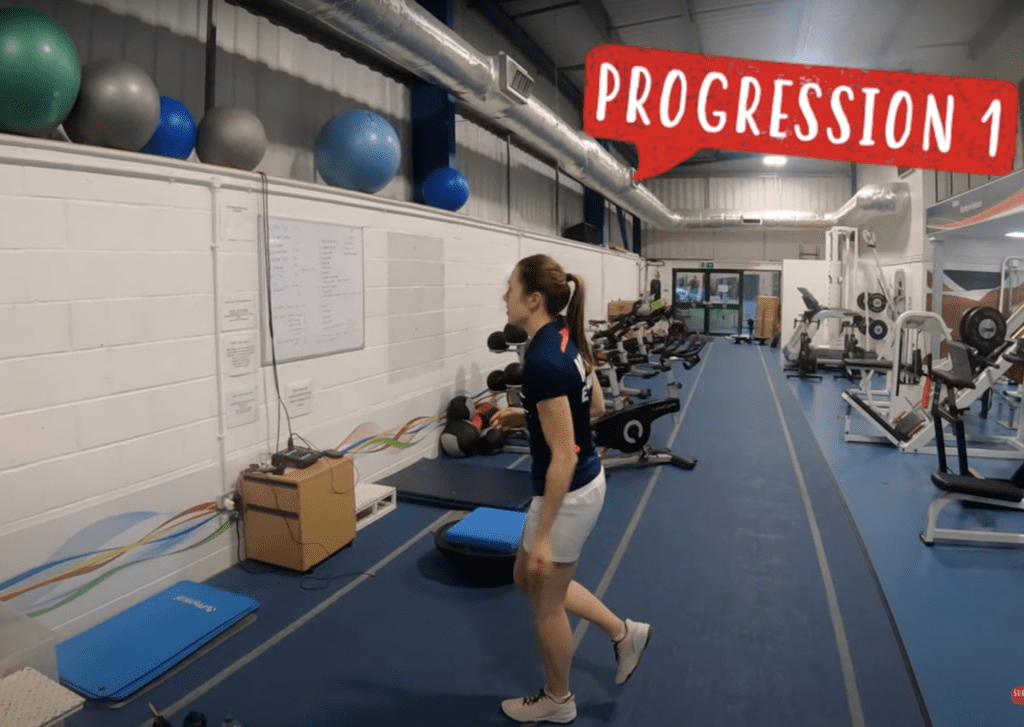Common Badminton Injuries & How To Prevent Them
We have seen so many different badminton injuries over the years – some that could have been prevented, and others that were just one-off horrible-to-watch injuries.
The 5 most common badminton injuries are:
- Knees
- Shoulders
- Elbows
- Feet
- Ankles
There are several preventive measures that all badminton players should take to minimise the risk of these injuries, so we’ll now go through each of them as well as how to prevent them!
5. Ankle Injuries In Badminton
Starting at number 5 on our list is ankle injuries. Playing badminton involves lots of jumping, twisting and turning. These continuously explosive movements mean that we’ve seen a lot of rolled ankles over the years, whether it’s pushing off the ankle or landing awkwardly!
Whilst some people are more prone to ankle injuries, and often you can’t avoid them, there are 2 main ways to reduce the risk of an ankle injury when playing badminton:
- Wear an ankle brace or strapping.
- Strengthen the ankle and the muscles, tendons and joints around it.
Here is an example of an exercise you can do to strength your ankle, with 3 progressions.



For all 3 progressions you should stand on one leg, and throw a ball against the wall and catch it with your racket hand. Each progression makes it harder to stabilise yourself, meaning your ankle has to work harder.
Progression 1 – Stand on the floor.
Progression 2 – Stand on a spongy surface or a towel.
Progression 3 – Stand on a bosu ball.
4. Feet Injuries In Badminton
There are lots of bones in your foot and many injuries that can occur with these however the most common foot injury in badminton is in fact blisters. It’s so important to take good care of your feet.
We’ve unfortunately found this out the hard way. Losing a match, or struggling to get through a tough training session because of a blister that could have been avoided. Despite some blisters being unavoidable, many can be a result of new shoes or playing a lot when you’ve not played in a while.
Blister plasters are not something we’d recommend for badminton because as soon as you get sweaty they just fall off your foot! Instead, we’d always recommend using Second Skin along with a bit of tape to secure it. It might seem quite expensive at first, but it is definitely worth it!
There are also 200 squares in a box so if you use one 5 times per week, it will last you 40 weeks worth of blisters! Or if you just used it 2 times per week that’s 100 weeks – nearly 2 years!! So assuming your blisters go away over time and you don’t have a permanent one, it should last you a very long time!
You can get them from Amazon here.
As well as buying some Second Skin, we would recommend ‘wearing in’ your badminton shoes – wearing them around the house a few times before you go into a training session or even a match!
3. Elbow Injuries In Badminton
There are so many different types of elbow injuries, from Golfers Elbow to Tennis Elbow.
Generally, you’ll experience elbow pain if you have the wrong technique or grip, or if you are too tense and squeezing the racket too hard!
Whilst we’re not qualified physios or doctors we have had pretty much every injury there is between us! Luckily we have also had guidance on these injuries from some of the best medical professionals there are.
We would first recommend resting! Next we would recommend analysing when you are feeling the pain and any specific shots that cause it. From here you may look at addressing your technique or just how tight you are squeezing the racket and if this is necessary.
Finally you may want to experiment with increasing the size of your grip so you either don’t have to squeeze as tight on some shots or feel less force through the grip. And if you already have a thick grip then it may be worth experimenting using a thinner grip.
2. Shoulder Injuries In Badminton
It’s not surprising how many shoulder injuries there are in badminton considering we use our shoulders in pretty much every shot.
Shoulder injuries are mainly caused by overuse or tightness of the muscles and joints in and around the shoulder. It is extremely important to keep your shoulder conditioned to cope with the amount of strain we put through it on court.
If you suddenly increase the amount you play, or do more smashes than usual in a session it is likely the muscles will be overworked and cause problems for your shoulder.
There is a bit more to it than that, so we won’t bore you with the science behind the many different types of shoulder injuries! Some of these can also be caused by your technique which we will address shortly, but first here’s our video on shoulder strengthening exercises you can do to increase the strength and endurance of your shoulder:
As we mention in the video, we do these exercises regularly and we’d highly recommend you to do the same.
It is also important to prevent your shoulder from becoming too stiff, along with the rest of your body! This will again help reduce injury and also improve the swing speed and power you are able to generate, and also your overall range of motion and movement on court. Check out our Badminton Specific Stretches Video for our favourite stretches for badminton players!
So, you have strengthened your shoulder in the right areas and also stretched it regularly and you are STILL suffering from shoulder pain?! Firstly, this might be something more serious that can’t be solved by rest and exercises! However there could be a problem in your technique that is causing the ongoing pain.
This may be from using your shoulder too much in your smash and not creating rotation with other areas of your body such as your hips, or simply being too tense in your action and placing more strain through your shoulder this way!
1. Knee Injuries In Badminton
Similar to the ankles, the continuous jumping, twisting and turning puts a lot of pressure on our knees. But we also have the added pressure of lunging at maximal speed. The combination of these means that there is a wide range of knee injuries, from injuries that put you out for 1-2 weeks, to injuries that put you out for months and months.
Minimising the risk of knee injuries can be achieved by a combination of things:
- Strength work in the gym.
- Stretching.
If you are someone who generally struggles with knee pain, we would highly recommend putting a lot of focus into foam rolling and using a massage device into your hips, glutes and quads. If these 3 areas are tight, it will put a lot more additional pressure on the knee joints.
We hope you’ve enjoyed this blog post on the most common injuries in badminton. Please note that we are not qualified physiotherapists, and if you have any medical questions or concerns then you should go and see a professional!


